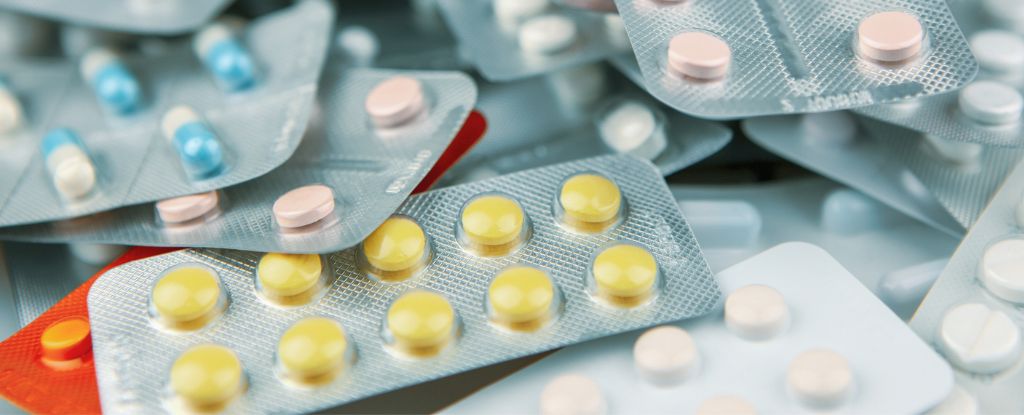Generic drugs have saved billions of dollars and benefited countless lives by making existing medicines more affordable. But a new study finds these drug copies may not all be created equal.
Despite government assurances that generic drugs hold the same benefits and potential side effects as brand names that have undergone rigorous clinical testing, the research uncovers initial evidence that some generic drugs imported to the US are not as safe as those made locally.
A team from Korea and the US studied 2,443 generic drugs made in ‘advanced’ and ’emerging’ economies, finding that compared to those produced in the US, those manufactured in India were associated with a 54 percent higher number of serious adverse events (SAEs), like hospitalization, disability, and death.
It’s unknown if these events are specifically caused by the generic drugs, but typically, the FDA doesn’t take SAEs associated with approved medicines lightly.
frameborder=”0″ allow=”accelerometer; autoplay; clipboard-write; encrypted-media; gyroscope; picture-in-picture; web-share” referrerpolicy=”strict-origin-when-cross-origin” allowfullscreen>
“This study serves as a clarion call for the FDA to carefully study the underlying reasons for the important quality risk difference we identify,” write the authors, led by In Joon Noh, now a supply chain scientist at Korea University.
“The FDA possesses much more granular data than do academic researchers, and this is precisely what is needed to determine exactly which aspects of the operations and supply chain explain our results.”
The results do not mean that all drugs made in India are of poor quality, or that the US should stop buying generic drugs from foreign producers.
The data included other countries too, but the core finding was “generic drugs made in India, where a majority of emerging economy generic drugs are made, experience significantly more SAEs than equivalent generic drugs made in the US, where a majority of advanced economy generic drugs are made.”
What the results do suggest is that the FDA’s claims that generic drugs are interchangeable may not necessarily hold true in all cases. Generic drugs may have the same active ingredients, the same dosage form, and the same routes of administration, but that doesn’t mean they are made with the same best practices.
Manufacturing operations and supply chain activity could be impacting the quality of these meds, making it more likely that a patient experiences severe side effects.
“There are good manufacturers in India, there are bad manufacturers in the US, and we’re not advocating for ending offshore production of drugs or bashing India in any way,” says business analytics researcher John Gray from OSU.
“We believe this is a regulatory oversight issue that can be improved.”
In the last few decades, the generic drug landscape in the US has shifted as foreign competition for a chunk of the market surges. Nationwide, generic drugs account for more than 90 percent of all dispensed prescriptions, and a lot of these now come from overseas.
In just a short space of time, India’s pharmaceutical industry has grown to supply nearly half of all the generic prescription drugs filed in the US, including those for hypertension, mental health, lipid regulation, nervous system disorders, and ulcers.
The FDA maintains these generic drugs are all interchangeable, but some research has warned that generic drugs are “not as safe as the FDA wants you to believe.”
One pharmacologist claims that the FDA does not inspect the drugs of foreign manufacturers with the same rigor as they do domestic manufacturers because officials “lack the capacity to adequately oversee foreign manufacturers and struggle with international logistics.”
Drug testing and manufacturing inspections are expensive, and preannounced inspections are flawed. A drug manufacturer in India has been caught shredding documents the night before an FDA inspection. In 2014, the Drug Controller General of India told Sushmi Dey at Business Standard that if facilities had to meet US standards, they would “have to shut almost all of those.”
The FDA currently maintains confidentiality regarding the location of generic drug manufacturing. Even submitting a freedom of information request won’t change that. This means that it’s really difficult to confirm the agency’s claims that generic drugs are interchangeable.
The team got around this hurdle by using the Structured Product Labeling set, which provides data for all drugs on the US market, including the manufacturer name and plant location.
Specifically, generic drugs from India that had been on the US market for longer were more likely than US drugs of an equivalent age to be associated with severe side effects, the researchers found.
This suggests a ‘race to the bottom’, whereby competition for drugs with low profit margins has grown so great that company attempts to make the medicine as cheaply as possible have impacted its quality.
To ensure public health and to inspire more trust in generic medicine, the authors argue the FDA should make the location of drug manufacturers and their quality transparent for consumers.
The study was published in Production and Operations Management.





